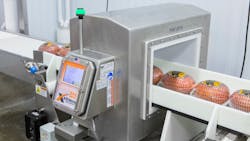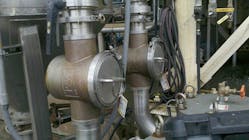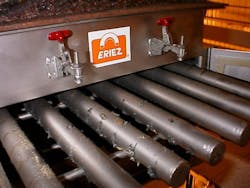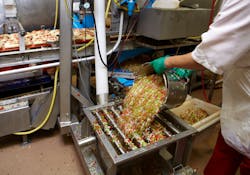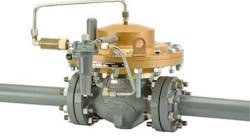The responsibility for product purity is shared by food processing plants and their suppliers. Every participant throughout the process must ensure foreign contaminants are not present in the end products companies deliver to their customers. This article reveals the best practices food processing plants use today for achieving the highest product purity and avoiding costly tramp metal damage.
Readers will learn about the relationship between magnetic separation and metal detection, and they will gain a better understanding of the importance of emphasizing product purity and equipment protection from the receiving dock to the shipping department. Furthermore, readers will discover why it is essential to engage in continuous training to stay updated on product safety regulations and process improvements.
1. It starts with magnetic separation
Magnetic separators are very effective in applications where the goal is to extract ferrous and certain stainless steel before the food product is passed through metal detectors. The magnetic separation industry is constantly evolving to meet customer demands. Manufacturers like Eriez work to improve their products by applying state-of-the-art material sciences, engineering developments and manufacturing processes. Advancements in magnetic separators are made on a regular basis.
These rare earth magnetic separators — with their strong circuits — improve product purity as soon as they are installed by removing more harmful metal from food.
This magnet circuit is now incorporated into tubes, grates and liquid line traps. It surpasses previous models and competitive units with greater holding force and improved separation efficiency. The increased power has a direct and positive impact on product purity and plant productivity. These advanced magnets incorporate a balance between high gauss and high pull force to influence tramp metal trajectory and hold onto the particulates, even during a wash-off process.
2. Monitoring product purity from receiving to the shipping dock
Many confectionery companies have installed a series of liquid line B-Traps or dry pneumatic RF cartridge magnets at the processing doors of their plant. When the tanker truck comes to the side of the building and hooks up the hose, the B-Traps or RF cartridges on the other side of building/wall ensure metal is not entering the plant.
When it comes to food safety, magnetic separation and metal detection should be used throughout the entire process, especially at the beginning. Oftentimes, food processing companies are most interested in the end or final package. That may be satisfactory, but consider the added quality possible if the product is monitored from the start of the process.
Some companies understand what needs to be done, while others do not. While some may claim ignorance, the law does not view this as a viable excuse. All plants have a responsibility to do their own due diligence.
For example, a cereal processing plant relies on its sugar and flour suppliers to deliver clean, contaminant-free ingredients. Once the product enters the plant, the processor assumes responsibility for the ingredients.
There is great value in conducting an annual audit to see what changes are needed to improve product purity and protect equipment. Based on the latest advancements in technology, there are new options to further improve product quality and protection. Plant-wide audits can also be valuable.
3. Metal detectors enhance food safety
Plant operators should not assume that every supplier is sending a perfectly clean product. Realistically, there are many opportunities for contamination to occur before products arrive at the processing plant. Metal can come off the walls of a rail car. A fastener, nut or bolt may fall off a truck. A clamp can fall through the grate in the floor. It is surprising how often these things happen.
Even with safety regulations in place, many plant workers do not check items for contamination upon arrival. Proactive companies never assume complete cleanliness, so they install magnetic separation equipment and metal detectors at the very beginning of their processes. Fortunately, the number of companies who invest in these proactive measures is growing.
For example, a company in the southern United States placed a vertical metal detector below its silo, but the company did not want it to reject contaminated product. Rather, the company decided to count the amount of metal in the product coming into its plant from a major supplier. The company wanted to hold the supplier accountable. In this case, one rail car had 10 pieces of metal in the shipment. This was obviously not acceptable.
Today’s metal detection products combine a precision mechanical design with state-of-the-art electronics, multiple frequency range, vibration immunity and complex algorithms to detect the smallest metals in difficult products. Industrial metal detectors are also designed for harsh wash-down environments.
In a survey, field representatives and food processors determined what they sought in terms of today’s metal detection systems. Here is a brief report:
- Customers seek metal detection systems for demanding applications. They must work in extremely low and high temperatures and also be able to withstand severe high-pressure washdown/environments.
- In a world where contamination results in recalls, processors stress the importance for monitoring, recordkeeping and sophisticated electronics.
- Food processors want to detect the smallest contaminant possible, while minimizing the number of false rejects.
4. Metal detectors take sensitivities to a new level
New metal detection systems have the ability to find smaller metal contaminants than previous metal detectors, even in difficult applications. The Eriez Xtreme Metal Detector, for example, ships with factory pre-sets for various products based on actual testing and the provided application data.
With the Xtreme software and graphical interface, customers can detect contaminants at levels never before possible. With typical metal detection technology, these contaminants went undetected. Be certain to evaluate the software when you compare metal detectors before making a final decision.
5. Remote monitoring and record keeping are critical
Government guidelines drive companies to create policies, procedures and protocols to ensure food safety. New metal detector systems provide reject log monitoring along with remote notifications to processors when a problem exists. Both are critical when it comes to safety and existing food safety regulations.
Today, it is critical to have records as confirmation and regular reporting. Even 24/7 monitoring from remote locations is possible. It is vital to monitor product purity from the time the product enters the plant until the time it leaves the shipping department. This continual data logging is imperative for corrective actions and auditing.
6. Investigative food safety training and services provided by manufacturers
Companies like Eriez can help processors with their toughest metal contamination challenges. A number of companies are at the front line when serious metal fine problems appear. As part of the purchase, customers not only receive high performance magnetic separators and metal detectors, but they also have access to training. Training takes a number of forms, including in-plant training, webinars and mobile training units. In more and more cases, manufacturers provide tutorial videos, case studies, product literature, installation and operation manuals and start-up installation support.
The best companies work with customers to understand their goals. What is the particular application? What size metal needs to be removed? Is there a grinder or mill? For larger material, a large ceramic magnet might work fine. In other cases, a different solution may be in order.
Positioning is important. For example, a rare earth magnet should be placed ahead of the mill. But on the other side of the mill, near the grinder, another rare earth magnet should be installed to remove the fine particles that may have escaped the first magnet.
Manufacturers must ask the right questions to make sure customers are educated and get what they need. Customers often lack understanding or have serious misconceptions about metal removal and detection.
Conclusion
There are many reasons why new high-powered rare earth magnetic separators, metal detectors and smart manufacturing techniques have raised the bar when it comes to product purity and equipment protection. Each day, diligent companies avoid recalls and damaged reputations. Companies must look at technology to be certain they are achieving the highest product purity possible.
Proper support and training enhances value beyond the price of the purchased equipment for years to come. Look for manufacturers who have developed a highly skilled worldwide representative network that is ready to meet any processing and production challenges. Reduce the chance for tramp metal contamination, improve product purity and educate employees. Following these recommendations will help processors avoid product recalls, damaged equipment and lost productivity.
Eric Confer is Eriez market manager for light industries. In this role, he is responsible for the strategic growth of products sold in the food, pharmaceutical, chemical, plastics, wood, glass, rubber and textile markets. Eric joined Eriez in August 2006 as a technical sales representative and was promoted to product manager — separation in 2013. He earned his Bachelor’s Degree in International Business and Marketing from Penn State University, and attained a MBA from the University of Liverpool.
Eriez
